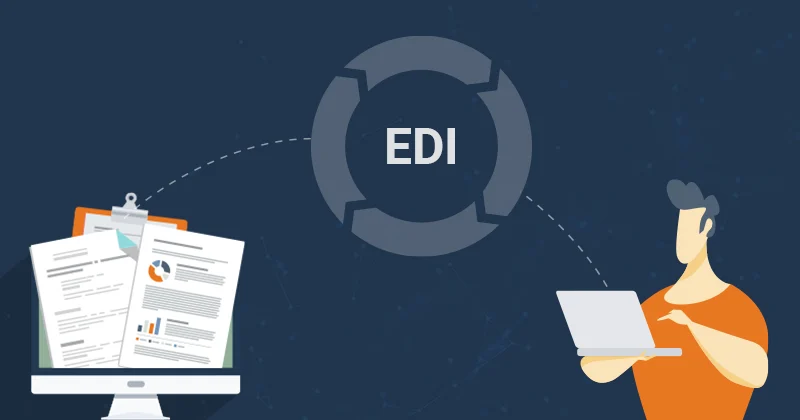
The growing needs of every business require them to adapt to new concepts and technologies. EDI, or electronic data interchange, is one such concept that every E-Commerce Store and other businesses are using. It works on real-time information processing, decreasing the time to complete tasks, saving costs, and increasing accuracy. There are multiple benefits that a business can get from integrating EDI with their platforms, like enhanced efficiency, improved processing, better performance time and cost savings, and so on.
The list of benefits could be never-ending, but one needs to understand what EDI is and why you need it.
What Is EDI, And Why Do You Need It?

At present, a significant number of businesses in the market have edi integration to collect and process information. Businesses previously collected this information from papers that had information such as invoices and other purchase details. An EDI or electronic data interchange system collects and processes information according to the requirements. Any transmitted document received by a company is converted into a document that back-end systems can read with the help of an electronic data interchange only.
At present, this may seem simple, but previously, people had to provide all this information by writing them on paper. Doing so created chances of errors and an increase in time consumption. All of this further leads to increased costs and loss to the business. Electronic data interchange plays a significant role in decreasing errors as well as the time required and increasing sales at the same time.
Any and every business wants to increase its profits and decrease the amount of time it takes to process information that has no errors. It is where electronic data interchange comes in to simplify information processing by replacing data entry specialists with electronic data interchange solutions or software. The plus point is that the data entry specialists can further specialize in electronic data interchange to use it in different ways for the business’s profit. Especially for e-commerce stores, electronic data interchange plays a significant advantage in helping the owner to accept orders even without the need for employees for the whole process.
Types Of EDI Integration
EDI integration is an essential concept, but how you implement it on the basis of understanding is what keeps you one step ahead of others. Even though EDI is a simple concept, there are three types of EDI that help in better implementation. Read below to learn more about the three types.

-
Direct Integration
In direct integration, a particular protocol is used to establish a link between the business partner and your ERP. This protocol is established with the help of the internet connecting directly to the business partners, be they, customers or suppliers. This protocol handles complex integrations with a vast amount of information. Without direct electronic data interchange integration, individually addressing a massive amount of information can produce errors and be more time-consuming.
Another name for direct electronic data and trade change integration is a point-to-point EDI. It is so because the specific protocol connects various business partners and your ERP directly.
-
Indirect Integration
The indirect electronic data interchange integration is the link between your ERP and the third-party provider. It is usually done with the help of an electronic data interchange broker. It works by transmitting the information from your end to the broker. From here, the information that the broker receives is processed here and further transferred to the customer or supplier.
This method is also known as VAN integration, where VAN is short for Value Added Network. As the third party involved helps you communicate with different partners in multiple formats simultaneously.
-
Hybrid Integration
When a business has different needs, it can require both indirect and direct electronic data interchange. To implement both at the same time, hybrid electronic data interchange integration is used. Here the person using the electronic data interchange needs to be flexible and knowledgeable about the integration process and the tools required. Further hybrid integration is of two types- with partners with electronic data interchange and those without an EDI.
Those partners who already have electronic data interchange need a person with accurate information about the electronic data interchange. Whereas for the other type, an electronic data interchange broker can exchange information with other forms of communication. These can be PDFs or emails which can be appropriately processed by translating the information needed when sending the pdf or email.
EDI Integration With Your E-Commerce Store
Electronic data interchange integration might seem like a complicated process when implemented by a person, but it is actually just a series of networks that need to be adequately implemented. It can only be executed when the partner has an EDI workflow. EDI Integration is done with the help of a tech company or EDI solution company. The whole process begins when you apply for the EDI integration properly, keeping in mind that the process for integration is the same for all E-Commerce stores. The EDI process has two simple steps

-
Preparation Of The Documents
All the information must be collected and organized properly for the whole process to occur smoothly and efficiently. You can generate the information depending on the endpoints transactions and the documents required.
-
Translation Of The Documents
When all the information is complete and properly organized, all you need to do is transmit this information through a translator to convert your data format into a standard EDI format. EDI translation usually takes place with the help of an EDI service provider, but if you have an in-house EDI system, it can be done by a professional specialized in mapping.
Conclusion
Electronic data interchange was just a concept introduced previously but is now a need of all growing businesses. Integrated EDI with your ERP helps you cut down on unknown expenditures and enables you to gather essential data about the sales and spending of your platform. Integrating EDI properly according to your needs would help you grow your business, make sales, and give you an edge over others.




